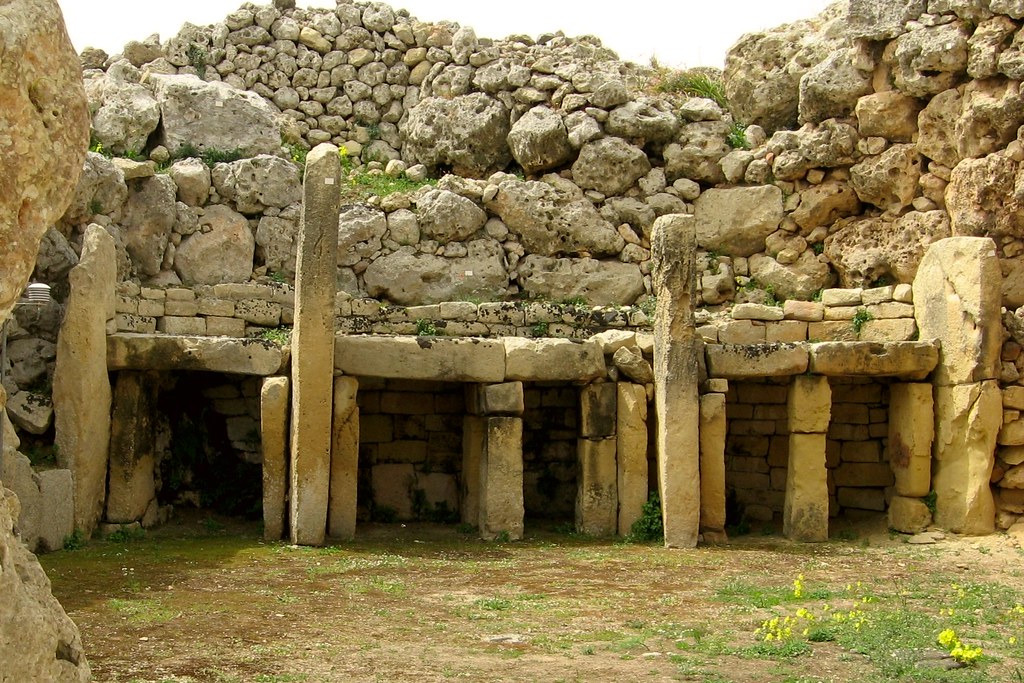The Regional Council submitted its reply to the Planning Authority regarding PA/00570/21. Below it is published in full:
15th December 2023
To whom it may concern,
The Gozo Regional Council representing all 14 local councils are calling for an intervention from your part with regards to PA/00570/21, an application which was approved on the 9th of November 2023, Ġgantija Heights, Triq il-Parsott, Xagħra and for a cumulative impact assessment to assess the cumulative impact of all applications in the buffer zone of Ġgantija Temples. This application and our lack of adherence to UNESCO’s Operational Guidelines and requests to the Maltese State threatens this extremely important world heritage site, as well as the status of the other sites. Given the importance of the site this application should have been carefully considered with a heritage impact assessment as recommended by UNESCO and any other checks that are there to help us give a learned response and safeguard our heritage and culture.
Furthermore, it is noted that there are currently 6 other applications or new developments, for smaller scale developments, within the same buffer zone; PA/08765/20, PA/05562/21, PA/04782/22, PA/00570/21, PA/08845/21 and PA/04352/21. UNESCO had also called for a cumulative impact assessment of the area, an assessment that has not occurred. Cumulative impact is defined by something that “results from the environmental impacts of a project [development] combining with the same environmental impacts of other past, existing and reasonably foreseeable future projects or activities, including those that may be enabled by the project.” On a one-by-one basis these stand-alone projects would not have impacted or affected its surrounding but their collective development are a different story. To this end we are also calling for a cumulative impact assessment.
The intervention on PA/00570/21 and for other impact assessments to be conducted are being requested on the following grounds;
- Less than 200 meters from the site itself are the Ġgantija Temples, one of the oldest free-standing buildings in the world and a UNESCO World Heritage Site, which are situated within an area of significant archaeological significance. Government Notice 853/10, which was released on August 17, 2010, includes this buffer zone (please refer to the document attached). A buffer zone, or at least the area that the proposed development is within which can clearly be seen and has been declared null by the Planning Authority. Any application for development should have been considered with the understanding that it will unavoidably negatively affect one of our most treasured archaeological treasures and its UNESCO site designation.
The 22-apartment block will negatively affect the view from and towards Ġgantija and subsequently could permanently impact the context and experience of this historic landmark. As these temples are listed together on the UNESCO World Heritage List, the risk is that any delisting could result in delisting all the other temples found in Malta.
- As per the Cultural Heritage Act, the Superintendence of Cultural Heritage is bound;
(b) to exercise surveillance over the protection, excavation, monitoring, exploration, conservation, restoration, maintenance, exhibition and accessibility, import, export and movement of cultural property;
(c) to promote and conduct research in the field of cultural heritage and to conduct excavations and other investigations which may be required so that objects or aspects of cultural heritage be discovered, cared for and appreciated;
(e) to ensure that adequate documentation is kept and archived in relation to excavation, exploration and search for antiquities, the conservation of cultural property and discoveries resulting from environment impact assessments;
(f) to promote and ensure the best policies, standards and practices in the conservation and presentation of artefacts, collections, museums, buildings, monuments and sites and to maintain all necessary databases and information derived from or required to organise, plan, co-ordinate, and monitor restoration and conservation projects;
(g) to advise and coordinate with the Planning Authority action in safeguarding cultural heritage when considering applications for planning permission relating to development affecting objects, sites, buildings or landscapes which form part of the cultural heritage as well as to advise other pertinent bodies on all matters of cultural heritage;
Fragility and Sustainability in Restricted Island Contexts (FRAGSUS), geophysical surveys revealed “a large number of anomalies”, which may also include other megaliths in the olive grove to the north of the temple, in the vicinity of the development plot, where an exploratory trench had also been opened. Meaning that the proposed development works may bury and cause damage to undiscovered archaeological remains and obstruct future archaeological research.
UNESCO’s rules and governing principles that are designed to protect World Heritage Sites are being ignored. Two letters were sent by the Director of UNESCO’s World Heritage Centre Lazare Eloundou. In both letters he had expressed the guiding principles that these impact assessments should be conducted, in his first “for potential impact” referring to the block in question and later that a heritage impact assessment is a “pre-requisite for development projects and activities that are planned for implementation within or around a World Heritage property” and “that such assessments should serve to identify potential negative impacts on the Outstanding Universal Value of the property and to recommend mitigation measures against degradation or other negative impacts on the cultural heritage within the property or its wider setting.” This means that both a cumulative assessment and a heritage impact assessment for one particular application (PA/00570/21) has been called for and ignored. If we continue to ignore these calls and its regulations UNESCO is well within their rights to revoke our title and status on these sites.
From what can be noted through reports the Superintendence of Cultural Heritage has green lighted this without an assessment report being conducted on what damage this building may have on Ġgantija, a Grade 1 Monument and UNESCO site. An assessment report that was also recommended by the UNESCO, which was not done. Not only are we endangering the site itself, but also its status as protocol and Malta’s responsibilities under the World Heritage Convention are not being followed in this regard.
- The Gozo and Comino Local Plan’s guiding principles are being violated by the proposed development. Seeking to preserve and enhance the distinctive cultural and ecological features of Gozo and Comino, the Local Plan only allows development that meets these requirements:
- improves the quality of life and the environment;
- is compatible with planning policy;
- is compatible with surrounding activities;
- is efficient on land-use;
- does not constitute over-development;
- does not overload the road network and parking capacities
- does not detract or endanger cultural or natural heritage;
- does not negatively impact its surroundings.
- The application violates the 2015 Strategic Plan for the Environment and Development’s Thematic Objectives 8.1 and 8.7: “To safeguard and enhance biodiversity, cultural heritage, geology and geomorphology by
– Identifying, designating, and managing areas, buildings, structures, sites, spaces and species for protection and appreciation.
– Controlling activities which might have an impact on areas, buildings, structures, sites, spaces and species with a general presumption against the demolition of scheduled and vernacular buildings.”
- According to Policy 1.2G of the 2014 Rural Policy and Design Guidance (RPDG) the Planning Authority is required to guarantee the protection of protected areas and reject any development that “would have an unacceptable adverse environmental, landscape, cultural or archaeological impact.” Consequently, this application should not be approved.
- Strategic Plan for Environment and Development’s (SPED) vision for Gozo is also contradictory with the development applications in the buffer zone of Ġgantija: “It shall protect the Gozitan lifestyle, the island’s environment, resources, culture, and identity.” This goes against SPED’s Urban Objective 2, which states: “to improve the townscape and environment in historic cores and their setting with a presumption against demolition of property worthy of conservation.”
- The Gozo Regional Development Strategy published September 2023, has the following goals to;
- Protect and enhance Gozo`s biodiversity, natural, traditional and historical heritage;
- Heighten Gozitan communities awareness and appreciation of our natural, traditional and historical heritage;
- Hand over a sustainably managed environment to future generations.
- The area’s maximum height is determined by Annex 2 of DC15 and policy GZ-EDGE-1. Nonetheless, every development application within the archaeological buffer zone of Xagħra has been evaluated individually, taking into account factors such as excavation, height, volumes, and details. The proposed application needs to be assessed for its effects on the historical context of the Ġgantija Temples, particularly with regard to its visual impact.
The property directly faces the Temples, will be visible from both the Temples and their buffer zones, and poses a threat to both their possible UNESCO World Heritage property status and the integrity of their protective buffer zone.
Given all that has been noted, the Planning Authority should have categorically rejected this proposal because of the permanent harm it will do to one of our most treasured archeological sites. The outcome of this planning application will have an impact on the significance and value of other historical and archaeological sites and historical monumental sites. Furthermore, the approval of this may give precedent to encourage and allow other development applications that are close to historical landmarks.
To this end we are calling for a re-assessment of this approved application and for all required studies in and of the area including the stand-alone heritage assessment and the cumulative impact assessment to be conducted and vetted accordingly. Once the results are in hand, and only then next steps should be taken accordingly, ensuring the protection of our heritage and history.
Sincerely yours,
Rita Mifsud Attard
Executive Secretary
Gozo Regional Council

